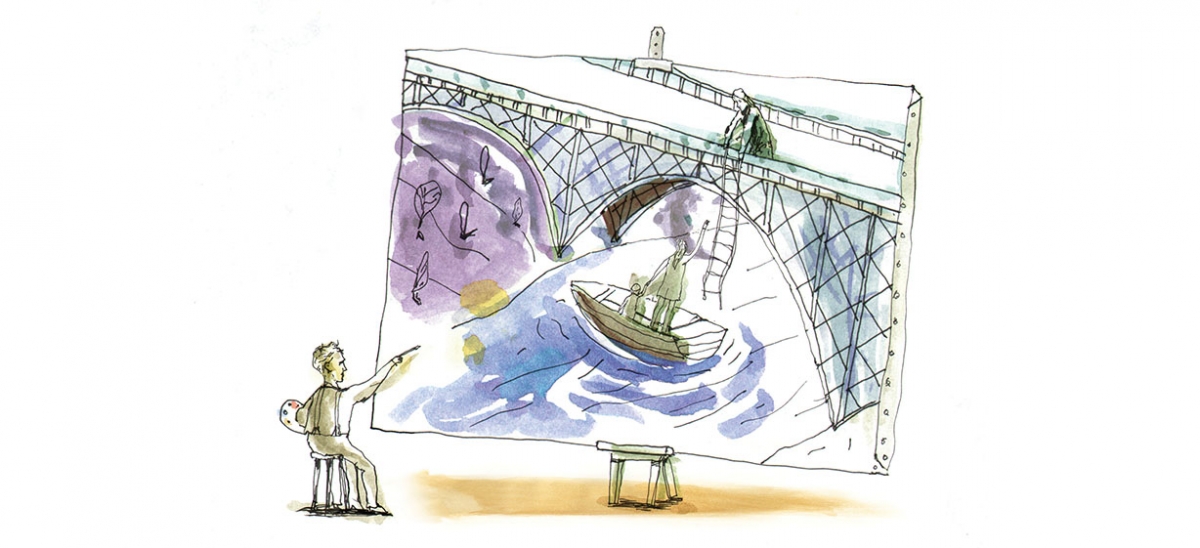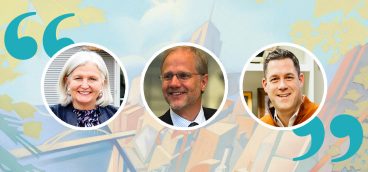
John Kane was the quintessential Pittsburgh working man: tough, hard-working, unpretentious, and yet extraordinarily creative. He emigrated from Scotland in 1879, worked for Frick’s coke works, Carnegie’s steel mill and the Pennsylvania Railroad where he became a painter of boxcars for the railroad. Later, emerging as a true artist, he created some of the most powerful paintings to come out of 20th-century America.
When Kane the working man brought his art to the Carnegie International in 1925, he was rejected. The next year, it happened again.
But he had another Pittsburgh characteristic: persistence. Kane came back a third time and the jury included successful American artist Andrew Dasburg, who insisted that Kane be admitted. Kane became an instant and spectacular success. His paintings today are part of the collections of the Carnegie Museum of Art and major art institutions in New York and elsewhere. The working-man artist, as much as Carnegie and Frick, has become a symbol of Pittsburgh ingenuity.
And that same trait has today enabled a great period of renaissance here, with business, the arts and the general community all benefitting. This new prosperity gives us hope that our 21st century, new urbanist vision will point the way to a bright future.
But there is a big problem that is certain to keep us from realizing our development dreams: We are in danger of leaving behind the very Pittsburghers who, with modest support and access to opportunities, would make contributions to further cement the region’s future success. The John Kanes of today might show as much potential for greatness and be just as dogged in trying to go after opportunities to better themselves, but the New Pittsburgh economy is simply not accessible for a lot of people.
In fact, while Pittsburgh is celebrating its new vibe, it is a relatively exclusive party: We are in danger of leaving 30 to 40 percent of our population behind.
At the city’s community foundation—70 years into the mission of improving quality of life for residents—we want to promote the city’s high-level achievement; but as the local philanthropy, we also have the street-level vantage point. Too many working-class residents can’t even understand what the celebrating is about. In fact, they are feeling the opposite—frightened and hopeless—to a degree that Kane himself rarely did.
But one Pittsburgh value is common to both eras: unpretentious caring. Neighbors look to neighbors to check in, lend a hand and—no questions asked—give a lift when needed. Residents with influence and authority reach out to those at the margins as Dasburg did for Kane. At The Pittsburgh Foundation, hundreds of our donors have effectively been doing these things for decades. We even have a label for that personal style of generosity and engagement: “100 Percent Pittsburgh.”
Knowing we need to be community leaders as much as development cheerleaders, we are applying the 100 Percent Pittsburgh title to a new long-term initiative with the goal that all residents in the region have the opportunity to get the benefits coming out of the New Pittsburgh. It prompts us to add to the New Pittsburgh by reaching out to the 30 to 40 percent prevented from full participation by life conditions—most often related to poverty.
“We are applying the ‘100 Percent Pittsburgh’ title to a new long-term initiative with the goals that all residents in the region have the opportunity to get all the benefits coming out of the New Pittsburgh.”
The awareness-building campaign for 100 Percent now begins in earnest with a series of events scheduled for the rest of this year. New partnerships are planned to close opportunity gaps, and throughout the year, we’ll be publicizing progress and telling the stories of those who have been disenfranchised. Beyond getting the word out, we are enlisting leaders in other sectors to help ensure that all Pittsburghers are able to tap into the New Pittsburgh benefits.
While the public effort is new, our planning on 100 Percent began more than a year ago with this commitment: While we have ideas about what needs to be done, we first want to meet with residents at risk of being left behind and get their views on what they need to be full participants. The plan for this year and next is to concentrate on two groups: single women with children; and youth in the 12–24 age range, particularly those in the criminal justice system.
Even with that limited focus, I know our work is cut out for us. What I also know is that no 21st-century city can afford to leave a significant part of its population behind and expect to be successful in the long run. Kane once said that, while technical accomplishment is important, “the unity of handiwork with deep convictions, profound thought and lofty taste, working together, create a great work of art.” I believe the same is true for residents working together to create a great city that offers opportunities for everyone.




